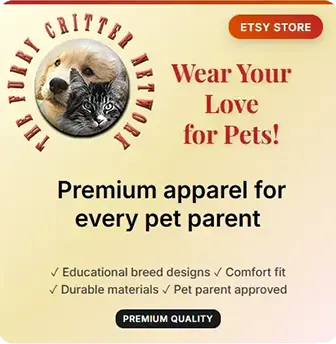The Chow Chow typically lives 8-12 years when bred responsibly and provided appropriate care throughout life. However, the breed faces several hereditary health challenges that prospective owners should thoroughly understand before committing to ownership. Acquiring dogs from reputable breeders who conduct comprehensive health testing on breeding stock significantly reduces the risk of hereditary conditions. The Chow Chow Club, Inc. recommends specific health clearances for all breeding dogs, including evaluations for hip dysplasia, elbow dysplasia, patellar luxation, and various eye diseases.
Hip dysplasia represents one of the most prevalent orthopedic concerns in Chow Chows, causing pain, lameness, and progressive arthritis that diminishes quality of life. This developmental condition results from genetic predisposition combined with environmental factors including growth rate, nutrition quality, and exercise patterns during the critical growth period. The Orthopedic Foundation for Animals provides hip evaluations allowing breeders to identify dogs with sound hip conformation. While hip dysplasia cannot be completely eliminated, breeding exclusively from dogs with good or excellent hip ratings substantially reduces incidence. Maintaining ideal body weight and avoiding excessive exercise during puppyhood helps protect developing joints.
Elbow dysplasia affects the elbow joint, causing lameness, pain, and degenerative joint disease as affected dogs age. Symptoms may include front leg lameness, stiffness following rest periods, or reluctance to exercise. The Orthopedic Foundation for Animals provides elbow certifications based on radiographic evaluation by board-certified veterinary radiologists. Patellar luxation, where the kneecap slips from its normal position, occurs in some Chow Chows with severity ranging from mild occasional luxation to severe cases requiring surgical correction. Genetic factors play significant roles, making orthopedic evaluations important components of responsible breeding programs.
Eye diseases affecting Chow Chows include entropion and ectropion, conditions related to eyelid conformation. Entropion occurs when the eyelid rolls inward, causing eyelashes to contact and irritate the cornea, leading to pain, excessive tearing, and potential corneal ulceration. Surgical correction typically resolves the condition permanently. Ectropion involves outward rolling of the eyelid, exposing sensitive conjunctival tissues to irritation and infection. Some individuals exhibit both conditions affecting different areas of the same eyelid. Progressive retinal atrophy causes gradual vision deterioration culminating in blindness. DNA testing identifies carriers of the gene responsible for this condition, enabling breeders to make informed mating decisions preventing production of affected puppies.
Gastric dilatation-volvulus (bloat) poses life-threatening risk for Chow Chows due to their moderately deep chest conformation. This emergency occurs when the stomach distends with gas and potentially twists, obstructing blood circulation and causing rapid deterioration. Symptoms include restlessness, unproductive vomiting attempts, distended abdomen, and signs of shock. Immediate emergency veterinary intervention is critical for survival. Risk reduction strategies include feeding multiple small meals daily rather than one large meal, preventing vigorous exercise immediately before and after eating, and using slow-feeder bowls for dogs who eat rapidly. Some owners elect prophylactic gastropexy surgery securing the stomach to the body wall, preventing dangerous twisting.
Hypothyroidism commonly affects Chow Chows, occurring when the thyroid gland produces insufficient thyroid hormone affecting metabolism throughout the body. Symptoms include unexplained weight gain, lethargy, hair loss or poor coat quality, chronic skin problems, and behavioral changes including increased anxiety or aggression. Blood testing diagnoses the condition, which responds well to daily thyroid hormone supplementation. Regular thyroid monitoring, particularly in dogs displaying symptoms, allows early diagnosis and treatment. Some Chow Chows develop autoimmune thyroiditis, a progressive condition where the immune system destroys thyroid tissue.
Preventive care establishes the foundation for maintaining Chow Chow health throughout their lives. Regular veterinary examinations, ideally conducted semi-annually for adult dogs, facilitate early detection of developing health problems before they become serious. Core vaccinations protect against dangerous infectious diseases, though protocols should be customized based on individual lifestyle and regional disease risks. Comprehensive parasite prevention including heartworm preventive medication and flea and tick control protects against both internal and external parasites. Regular fecal examinations screen for intestinal parasites requiring treatment.
Dental disease develops frequently in Chow Chows and can lead to serious systemic complications affecting major organs. Regular home tooth brushing combined with professional dental cleanings as recommended by the veterinarian maintains optimal oral health. Appropriate nutrition for the breed's size and life stage supports overall health and longevity. Maintaining ideal body condition throughout life reduces stress on joints and organs while potentially extending lifespan. Obesity exacerbates orthopedic problems and creates additional health risks, making weight management a critical component of preventive health care.
Common Health Issues
- recommends specific health clearances for all breeding dogs, including evaluations for hip dysplasia, elbow dysplasia, patellar luxation, and various eye diseases.
- Hip dysplasia represents one of the most prevalent orthopedic concerns in Chow Chows, causing pain, lameness, and progressive arthritis that diminishes quality of life.
- While hip dysplasia cannot be completely eliminated, breeding exclusively from dogs with good or excellent hip ratings substantially reduces incidence.
- Patellar luxation, where the kneecap slips from its normal position, occurs in some Chow Chows with severity ranging from mild occasional luxation to severe cases requiring surgical correction.
- Hypothyroidism commonly affects Chow Chows, occurring when the thyroid gland produces insufficient thyroid hormone affecting metabolism throughout the body.
- Dental disease develops frequently in Chow Chows and can lead to serious systemic complications affecting major organs.
Preventive Care & Health Monitoring
- This developmental condition results from genetic predisposition combined with environmental factors including growth rate, nutrition quality, and exercise patterns during the critical growth period.
- Maintaining ideal body weight and avoiding excessive exercise during puppyhood helps protect developing joints.
- Symptoms may include front leg lameness, stiffness following rest periods, or reluctance to exercise.
- Risk reduction strategies include feeding multiple small meals daily rather than one large meal, preventing vigorous exercise immediately before and after eating, and using slow-feeder bowls for dogs who eat rapidly.
Regular veterinary check-ups and preventive care are essential for maintaining your Chow Chow's health and longevity.

